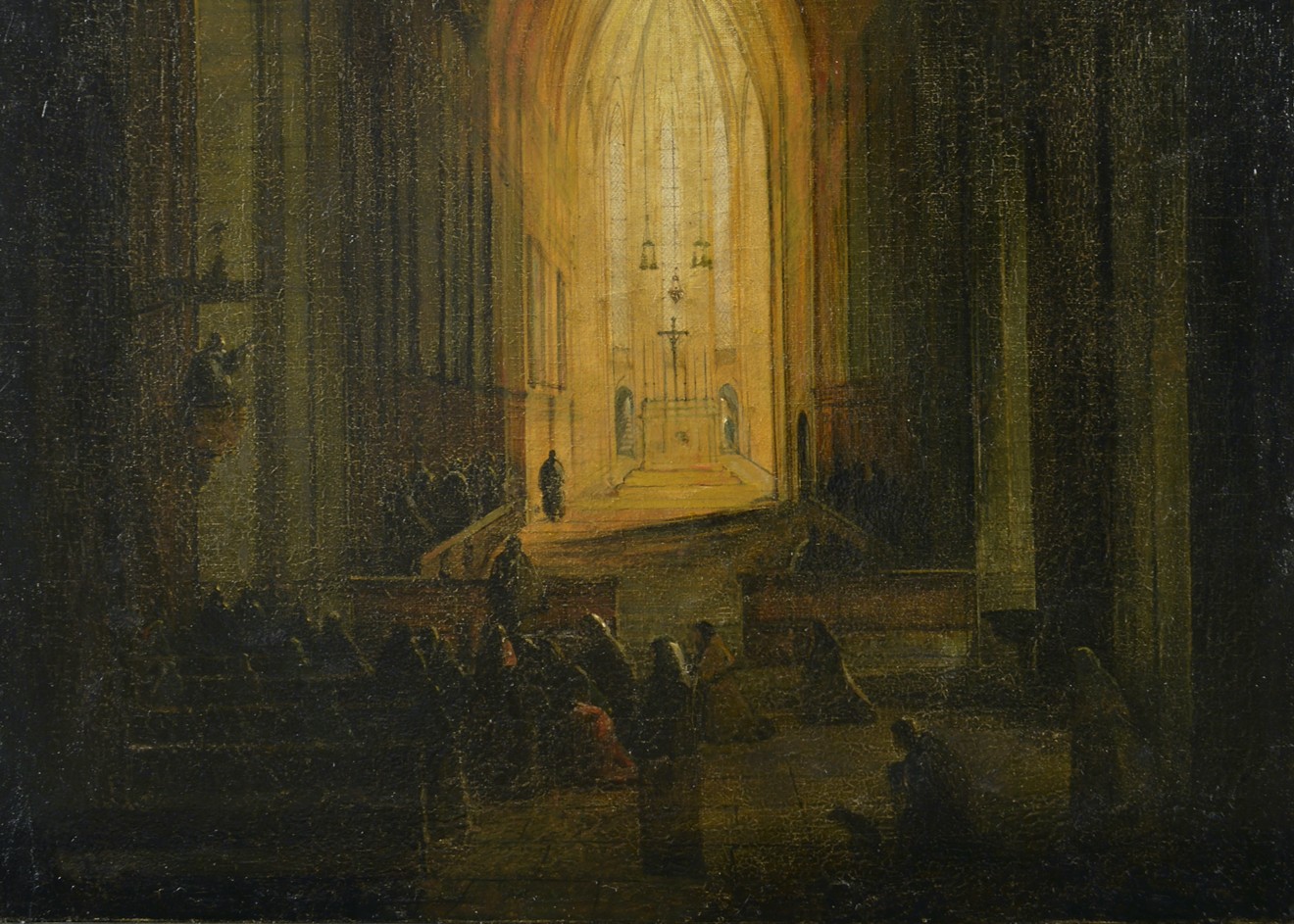“My grandma told me some pretty cool stories about him, so I knew he was an interesting guy,” Seltzer says. “But I didn’t realize how interesting.”
Now, someone had found a painting made by Gouhenant, Dallas’ first artist-in-residence. For Selzer, it was more than an unexpected discovery. It was a chance to unearth even more about this man of mystery. Her new book Adolphe Gouhenant: French Revolutionary, Utopian Leader, and Texas Frontier Photographer tries to shine a light on that mystery while giving readers an in-depth look at the famed Dallas artist.
“We always knew he was a character,” she says. “Now, we know a little more.”
If you pick up any book on early Dallas history, you’ll likely find Gouhenant’s name alongside the likes of John Neely Bryan and Sarah Horton Cockrell. Born in France in 1804, Francois Ignace “Adolphe” Gouhenant was a painter and a revolutionary. He also played a little music and spoke several languages. “He was always a wild character,” Seltzer says. And the French government would soon learn just how wild.
Before he wound up in Texas, the Frenchman was a devout follower of Étienne Cabet, a French philosopher who ultimately ran afoul of the government for his socialist ideals. Gouhenant, too, had a rather dramatic run-in with authorities.
“They were trying to violently overthrow the monarchy,” Seltzer says. Yes, you read that right: Dallas’ first artist-in-residence was put on trial for treason in France. From there, the story gets weirder.
Gouhenant went to trial with some fellow socialist-turned-anarchists, all of whom wanted fair wages and education for the working class. The painter (who Selzer says “got in over his head”) endured a mid-August tribunal where the scorching temps caused more than a few people to faint. When he wasn’t in court, Gouhenant was in a dungeon. Had it not been for an overzealous prosecution, he might have stayed there for a while.
According to Selzer, the government got in over its head, too, and ended up putting the idea of communism on trial. That strategy backfired, and Gouhenant was acquitted. Having soured on France and curried favor with Cabet, the painter was tasked with leading an upstart utopia in the United States. This was an era when utopian societies were all the rage, and Gouhenant’s group preceded the more well-known La Réunion group that started a utopia in Dallas. Unfortunately, Gouhenant’s navigational skills left something to be desired.“My grandma told me some pretty cool stories about him, so I knew he was an interesting guy ... But I didn’t realize how interesting.” – Author Paula Selzer
tweet this
“His group sails across the Atlantic and comes to New Orleans, then they steam up the Red River and find it’s not navigable past Shreveport,” says Selzer. “So they basically have to walk from Shreveport to Denton County.”
Things didn’t get much better from there. When the utopia failed to take off, Gouhenant was effectively kicked out of the group. The artist traveled to Fort Worth, where he got a gig teaching art to soldiers, and then to Dallas, where he opened the city’s first art gallery. He bought some land from the aforementioned John Neely Bryan (one of the founders of Dallas) and, from what Selzer can tell, planned to settle down.
“He wasn’t out to own a bunch of land,” she says. “That wasn’t his style.”
His gallery, the Arts Saloon, became an arts hot spot, hosting premier exhibitions, drawing large crowds and becoming the talk of the town. For a while, Gouhenant seemed to have it made. On top of his gallery’s success, he became an established photographer. Then, as Selzer chronicles in her book, things got complicated. Again.
Arts Saloon became a pawn in a legal battle between some powerful Dallas denizens, and Gouhenant became disenchanted with the city. At least, that’s what Selzer thinks.
“We know that he kept trying to make his mark, and he kept falling just short,” the author says. “But we don’t know a whole lot about his time in Texas. We know much more about his time in France.”
Which brings us back to that fateful email. With help from fellow researcher and co-author Emmanuel Pécontal, Seltzer tracked down one of Gouhenant’s paintings from his time in France. The piece depicts a church, which was common for Gouhenant, who always had a knack for capturing religious scenes. Despite some fraying and fire damage, it’s still standing. Specifically, it stands in his great-great-great-granddaughter’s living room.
“It’s nice to have this one,” Seltzer says. “Especially because we’ll probably never find anything from his time in Texas.”
After the legal fracas over Arts Saloon, Gouhenant left Dallas for Pilot Point. From there, his story gets murkier, partly because Selzer’s research uncovered 21 different spellings of Gouhenant’s name. The author knows that he was killed on his way to do some kind of business in Springfield, Missouri. But she doesn’t know who killed him, or why. Even though she spent years researching and writing a book on his life, Seltzer doesn’t mind a little mystery.
“It’s fitting, in a way,” she says. “He’s such a character that I can’t imagine him going out any other way.”











